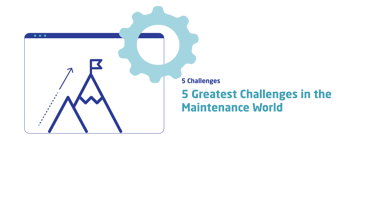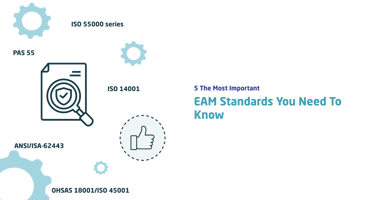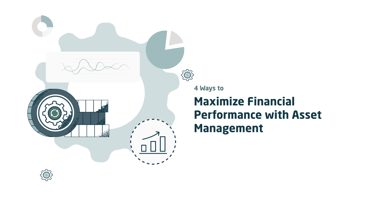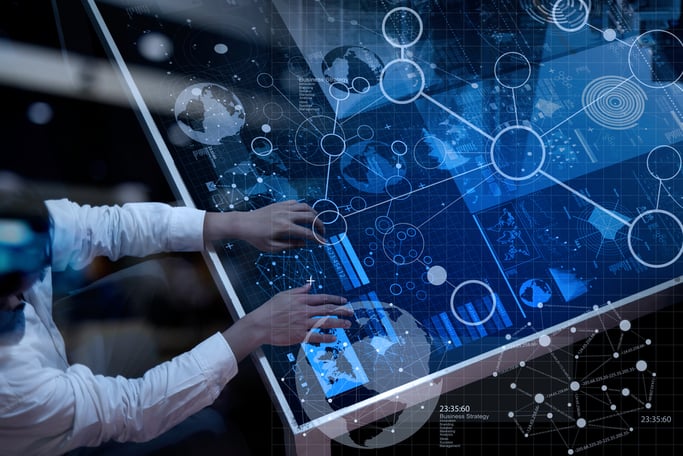
Let’s get to the point early on.
Getting EAM / CMMS implementation wrong is expensive and stressful for any sized company.
You have been warned.
The knock-on effect can be disastrous. It can lead to ruined partnerships and sometimes litigation between big, global players.
There are millions of industry people all over the globe who still carry the mental (and possibly physical) scars of a failed implementation. They wake up at night in a cold sweat, breathless, hoping the recurring nightmare images of the bloody battle between IT, Operations, Maintenance, and Accounting will one day fade from memory.
Nobody wants that scenario. Hopefully not anyway.
Common challenges of moving to a new EAM / CMMS
Firstly, if we are aware of them upfront, then we can go some way to avoiding them or at least mitigating them. We can smooth the path, make the transition less stressful.
|
Any large enterprise software application can be a challenge to implement. But an EAM system, because it affects most of the organisation, is one of the most difficult to deploy effectively. John Woodhouse, https://www.oilandgasiq.com |
Implementing a new EAM or CMMS is challenging from multiple perspectives.
If it’s a broader EAM then you will be introducing a system that is integrating cross-discipline business processes. These can be complex areas such as resource planning, IT, accounting, operations, procurement, and maintenance.
Yes, you’ve got it, those departments that people see battling each other in their recurring nightmares.
Of course, this integration is going to bring challenges. You’d be foolish to think otherwise.
Here are the 4 most common:
1. Data & information migration
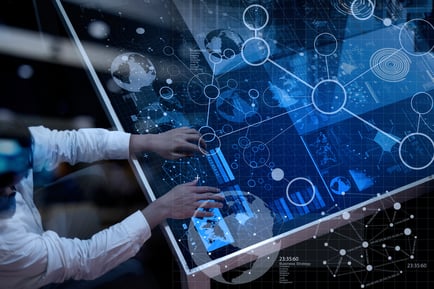
Asset, maintenance, and reliability data is a crucial foundation for all asset intensive organizatio
Why? Because it is a key enabler of smart business decisions that lead to higher human productivity, maintenance effectiveness, and less waste. Bad or missing data and information increases risks and costs.
You may be asking yourself: what goes wrong during a migration?
- Source data goes missing or simply isn’t transferred.
- Data migration is treated as an afterthought – not planned for, not resourced adequately, and rushed at the end of the project.
- Old, inaccurate data is migrated – did anyone check that the asset register and spares are correct in the first place?
- Different data structures in the new EAM – your old data doesn’t neatly fit into the new EAM boxes – some engineers will then just discard it!
- Post-migration data validation – this often doesn’t happen! The EAM system is not tested for being fit for purpose and incorrect data and information are ignored until they cause major problems weeks and months later.
Have you got a headache already?
That’s only the first point, there’s three more to come.
2. Business continuity
Major software implementations can cause real problems to business continuity. All organizations need to maintain essential functions during the transition.
A CMMS contains all the maintenance plans, spares data, asset lists, planning functionality, work order management, and resource information. Imagine if this is suddenly out of action for a few days or weeks?
Look at these potential scenarios: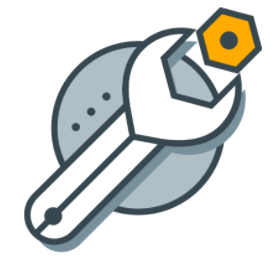
- Technicians unable to locate spares
- Planners unable to supply job plans for critical maintenance work
- Engineers can’t find OEM details to order spares.
- Work orders cannot be raised or closed out.
- Reliability engineers are unable to source historical data
Has any of this happened to you? Are you the one waking up at night in a cold sweat?
Even if your organization doesn’t see the EAM/CMMS as business critical, it is always a good practice to regularly back up the system.
3. System integration
Often in larger organizations, EAM systems will need to integrate with an enterprise resource planning (ERP) software.
ERP mostly deals with the financial assets in an organization, whereas EAM is all about the physical assets. Getting them to communicate with each other can prove complex, expensive, and problematic.
|
There is one word that has spread fear and terror into the heart of IT and finance departments since the beginning of software time: integration. Tracy S. Smith, www.reliabilityweb.com |
The main challenges that impede a smooth integration are:
- Databases are of different types (relational, flat file, hierarchical, SQL, etc.)
- Table structures don’t match up
- System constraints and rules are different
- Synchronization problems and delays
So, if you can get past these first three points successfully – data migration, business continuity, and integration, then there may be just one last small barrier to get past:
People and culture.
‘Small barrier’. An understatement, right?
4. Organizational & cultural acceptance
Introducing any sort of change into a workplace can be challenging.
Employees can get upset if you change the dessert menu in the staff canteen, let alone the EAM / CMMS or a global ERP.
|
System developers and integrators rarely appreciate the importance and scale of efforts needed to address human factors. Training methods are often naïve and shallow – out of touch with the human factors needed to establish competency and confidence. John Woodhouse, https://www.oilandgasiq.com |
We have to bear in mind the over-riding organizational culture: it is a powerful force that can make or break projects.
Is your organizational culture positive? Toxic? Engaging? Empowered? Fearful? Innovative? Disinterested?
When an organization introduces a new EAM / CMMS, there will be a lot of change to take on board such as new:
- Roles and responsibilities
- Cross-functional teams
- Work processes and work methods
- Systems
- Re-training and upskilling
People can be emotional and irrational when asked to do something entirely new.
See what happens when you ask an electrician to lubricate a pump bearing (Hint: stand back as the fireworks go off!)
It is to be expected. People often need to go through the natural change cycle:
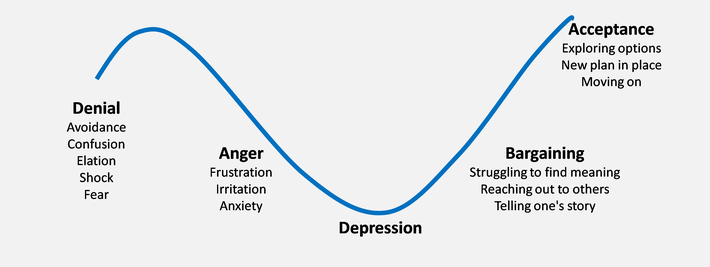
So, lots of challenges to think about when implementing a new EAM / CMMS. Let’s throw away the pessimism for now and think optimistically.
Let’s look for ways to overcome the challenges.
How do you overcome the challenges of implementing a new CMMS / EAM?
- Build a project team and focus on proper planning for data migration.
- Business continuity planning - establish risk management processes that prevent disruptions to critical services and can restore full function as quickly as possible.
- Integration planning - involve both vendors of ERP and EAM. Focus on business processes and development. Rationalize information flow between the systems.
- Use a change management process – Kotter’s 8 step process is a great way to start. Communicate, get people on board!
As you can see, planning plays a big part in project success.
You may not believe it, but sometimes even these basic considerations are ignored in order to get the EAM / CMMS up and running and relive the organizational pressure.
Easy to implement EAM system: Reality or a Myth?
A modern EAM or CMMS solution will play a key role in value delivery for organizations that take asset and maintenance management seriously. Excellence-driven organizations realize that this investment can help balance costs, risks, and performance.
Whether you are using pen & paper, Excel spreadsheets or an EAM for managing your maintenance today, you can try Dynaway EAM for FREE. Our vision behind the product was to create a FREE version of an EAM system that is fully functional, built-in Business Central, and easy to use AND easy to implement.
The reason behind the free product is that we want to make it easy for users to decide about the EAM system that meets their needs and requirements. No long-term investments, easy installation, and standard Business Central functionality that users already know.
As mentioned earlier in the article, one of the biggest challenges when it comes to migrating/implementing a new EAM system is Asset Data.
Our ambition with EAM-BC is that our customers can get started in 15 minutes. Assisted Setup is an important component here because it ensures quick system set-up.
You can start using Dynaway EAM today, no credit card required! Get it directly from Microsoft AppSource
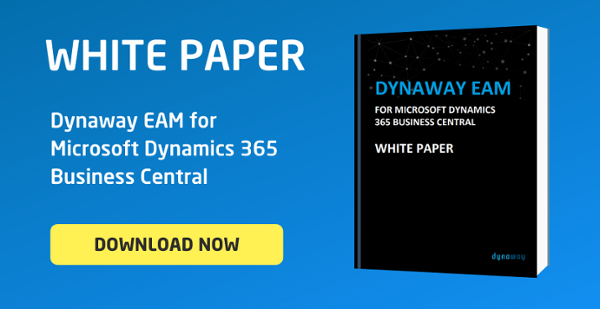
.png?width=388&height=200&name=Copy%20of%20Blog%20Featured%20Image%20(4).png)
